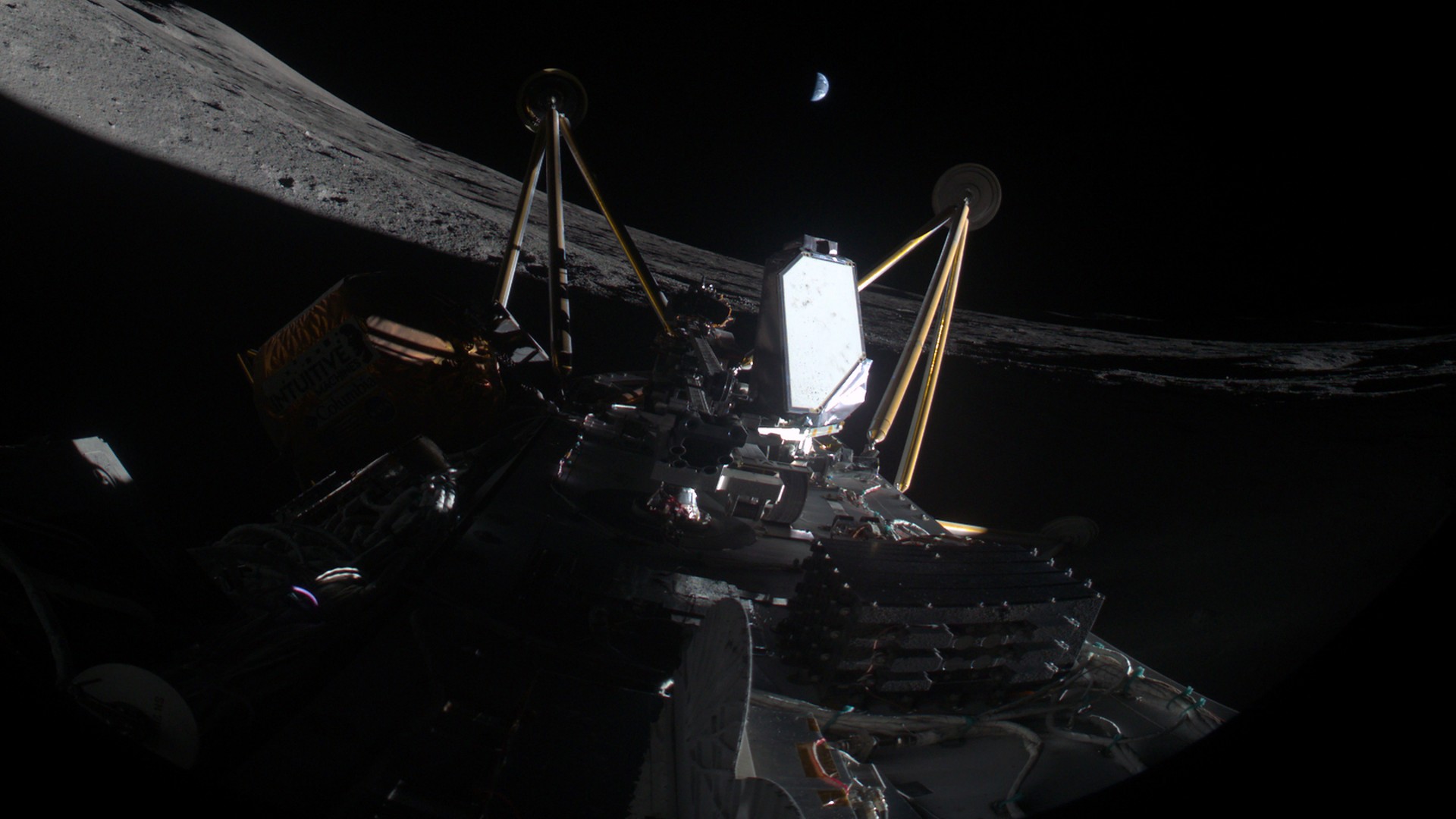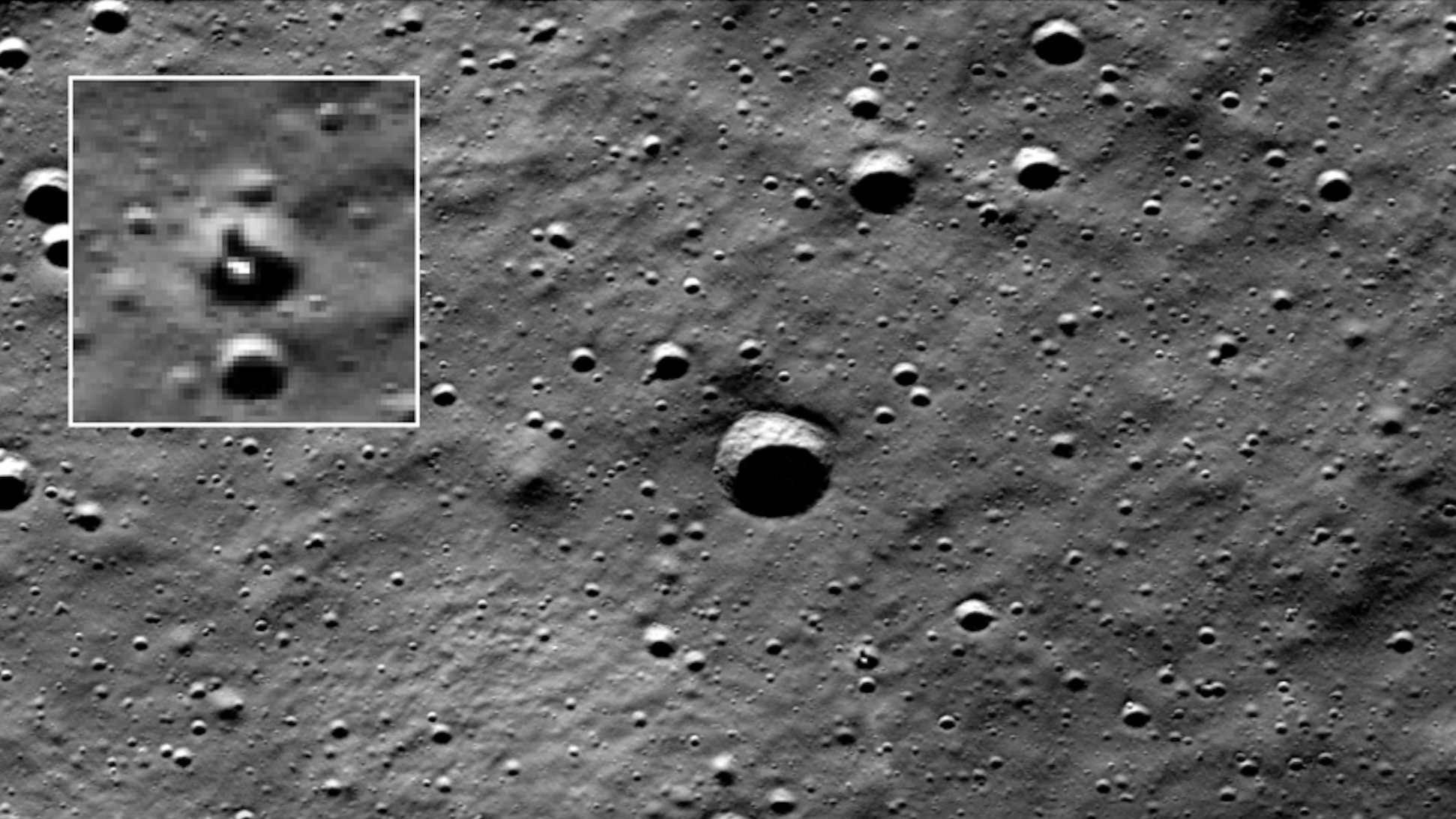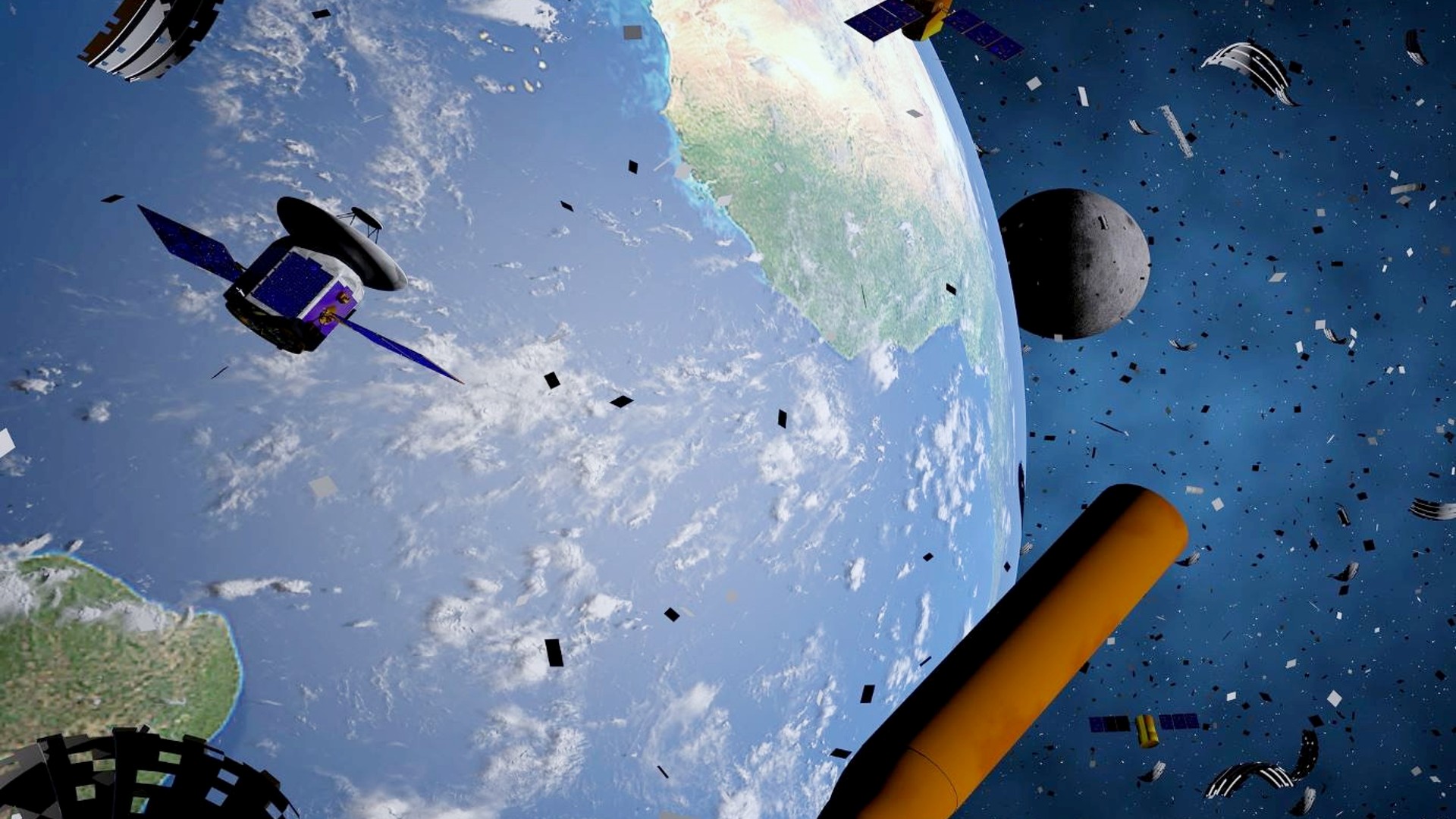Here's why the private Athena lunar lander toppled over on the moon

We now know why the private Athena lander toppled over on the moon earlier this year.
Athena, the second lunar lander built and operated by Houston company Intuitive Machines, fell onto its side shortly after touching down near the lunar south pole on March 6. Athena's solar panels couldn't harvest enough sunlight in this orientation, and the probe was declared dead the next day.
More than two months later, Intuitive Machines has completed an autopsy, pinning the anomaly on three issues that worked together to bring Athena down.
The first was interference with the readings from Athena's laser altimeter, the instrument that helped the lander gauge its distance from the lunar surface.
"In the final phase of descent, we saw signal noise and distortion that did not allow for accurate altitude readings," Intuitive Machines CEO Steve Altemus said on Tuesday (May 13) during an earnings call that also provided an update on Athena's mission, which was known as IM-2.
The second issue was the challenging lighting conditions in Athena's landing zone, which was just 100 miles (160 kilometers) or so from the south pole of the moon.
"South Pole topography and low-angle sunlight created long shadows and dim lighting conditions that challenged the precision capability of our landing system," Altemus said.
Breaking space news, the latest updates on rocket launches, skywatching events and more!
The third factor was Athena's compromised ability to recognize craters in the landing area. The lander's optical navigation system used photos collected by NASA's Lunar Reconnaissance Orbiter (LRO) at an altitude of 62 miles (100 kilometers).
This LRO imagery "could not accurately account for how craters appear at lower altitudes with south pole lighting conditions as you approach the landing site," Altemus said.

IM-2 was supported by NASA's Commercial Lunar Payload Services (CLPS) program, which puts agency science gear on private robotic moon landers. The goal is to gather cost-efficient data that will aid NASA's Artemis program of crewed lunar exploration.
Athena carried a suite of NASA science instruments and several other payloads, including Intuitive Machines' hopping spacecraft "Grace" and the MAPP rover, from the Colorado company Lunar Outpost. Athena's fall prevented those two other spacecraft from deploying onto the lunar surface.
IM-2 followed on the heels of IM-1, a CLPS mission that put Intuitive Machines' Odysseus spacecraft on the moon in February 2024. Like Athena, Odysseus failed to remain upright, tipping over after breaking one or more of its landing legs during touchdown. But Odysseus — the first private spacecraft ever to soft-land on the moon — managed to operate on the lunar surface for seven Earth days before going dark.
Intuitive Machines is working hard to ensure that its next moon lander — the vehicle that will launch on the IM-3 mission in 2026 — can stay on its feet. The company is implementing fixes based on the knowledge gained during IM-1 and IM-2, Altemus said.
"We've added dissimilar and redundant altimeters to the sensor suite, and they're going through more rigorous and extreme flight-like testing than we've done before," he said in Tuesday's call.
"We've incorporated an additional lighting-independent sensor for surface velocity measurements," he added. "We've expanded onboard terrain crater database for enhanced navigation across the surface of the moon."
The team is also feeding the detailed south pole imagery captured during IM-2 into machine-learning algorithms to improve future missions' navigation and crater-tracking abilities.
"Moving forward, we will succeed," Altemus said. "Land softly, land upright, land ready to operate."

Michael Wall is a Senior Space Writer with Space.com and joined the team in 2010. He primarily covers exoplanets, spaceflight and military space, but has been known to dabble in the space art beat. His book about the search for alien life, "Out There," was published on Nov. 13, 2018. Before becoming a science writer, Michael worked as a herpetologist and wildlife biologist. He has a Ph.D. in evolutionary biology from the University of Sydney, Australia, a bachelor's degree from the University of Arizona, and a graduate certificate in science writing from the University of California, Santa Cruz. To find out what his latest project is, you can follow Michael on Twitter.
You must confirm your public display name before commenting
Please logout and then login again, you will then be prompted to enter your display name.
